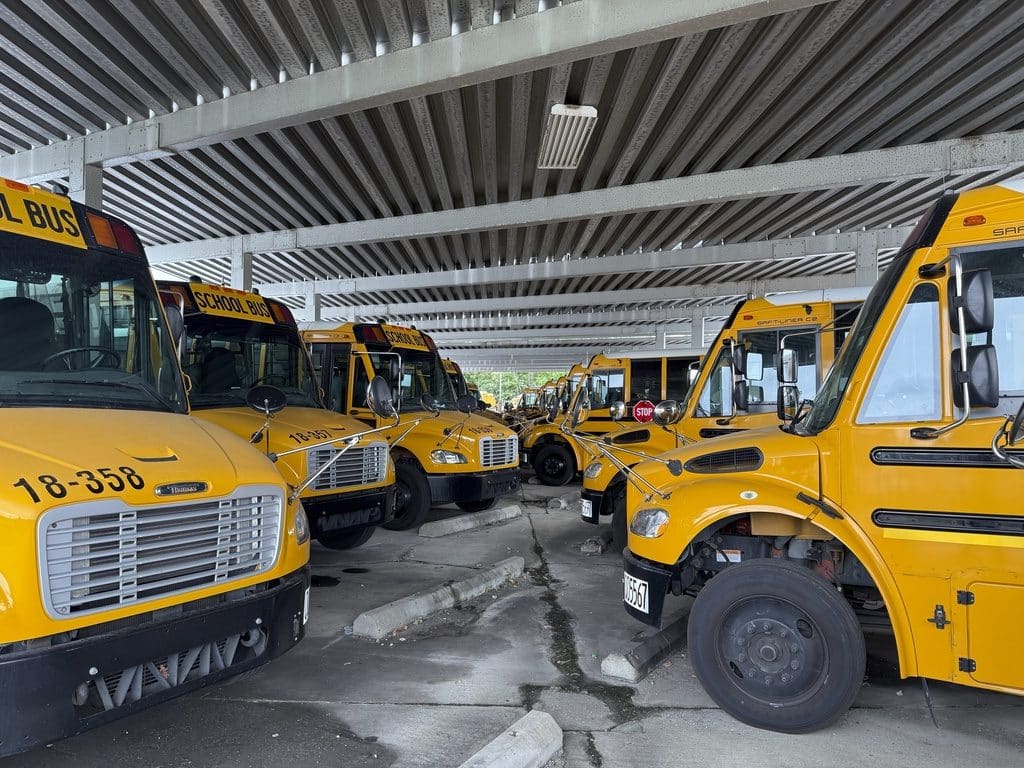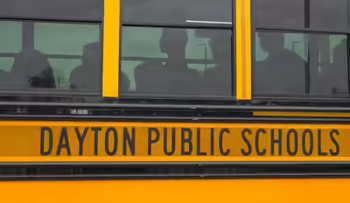Ohio Students Struggle to Catch the Bus as Private School Transportation Expands
Thousands of students across Ohio are facing a transportation crisis this back-to-school season as public school districts struggle to balance their obligations to both public and private school students.
Public School Buses Cancelled for High Schoolers
This year, many public school districts once again canceled bus transportation for high school students while continuing to provide buses for private and charter school students to comply with state requirements. In Dayton, a temporary solution allowing students to use public transit passes instead of school buses was reinstated by a judge last week following a legal dispute over restrictions imposed by the state.
Families across the state are scrambling for alternative transportation, highlighting a growing logistical challenge rooted in both a bus driver shortage and Ohio’s school transportation regulations.
The Impact of the EdChoice Voucher Program
The transportation crunch is closely tied to Ohio’s universal voucher program, which helps students attend private schools. Districts have long been required to transport students holding EdChoice vouchers, but the program has expanded to include nearly 90,000 additional students over the past four years, intensifying conflicts over how transportation is provided.
Advocates for public education argue that these mandates are rigid, unclear, and expensive. Public school districts are responsible for transporting K-8 students to private and charter schools, even on district holidays or during bus breakdowns. Additionally, they must provide equivalent transportation for high school students in private or charter schools within the same area.
Large Districts Respond with Alternative Solutions
Faced with rising costs and logistical challenges, some large districts have canceled bus service for high schoolers entirely, offering city transit passes where possible or leaving students to find their own way to school. Yet districts may still be required to transport private school students if notification deadlines are not met.
Parents like Ronnee Tingle from Dayton express frustration, noting the unfairness of public funds being redirected to private transportation while their own high school children must rely on public buses. Her daughter, a senior, navigates fluctuating city bus schedules each morning, making punctuality and connections a daily challenge.
Financial Strain on Public School Districts
Dayton Superintendent David Lawrence described the situation as “madness,” citing the diversion of roughly $2.5 billion in state education funds to the voucher program over the next two years, while public districts are still required to cover transportation costs for those students. His district alone operates 54 bus routes for public students and 74 for non-public students.
Lawrence emphasized that ending the mandate to transport private school students could allow public school buses to provide nearly door-to-door service for all K-12 students, improving safety and reducing disruptions caused by high schoolers navigating public transit independently.
Differing Perspectives on the Crisis
State Senator Andrew Brenner, a school choice advocate, disputes claims of a transportation crisis, stating that districts are doing everything possible to avoid transporting private school students while using state funds to support school choice. Lawmakers have allocated $1,500 per student to help districts cover transportation costs, though some districts claim this amount falls short of actual expenses.
Public school officials argue that transporting both public and private students costs far more than the state-provided funding, leading to budget pressures. Cleveland, for example, reimbursed families for 2,739 students deemed impractical to transport this fiscal year, while Columbus did the same for roughly 2,500 students. The state has sued Columbus, alleging the district failed to meet its transportation obligations.
The Logistics Behind the Costs
Dayton’s transportation system alone involves significant overhead, including buses costing over $150,000 each, a team of mechanics earning $66,000 annually, a $1.1 million maintenance division, and drivers earning around $22 per hour with benefits. Rising wages aim to counteract the “Amazon effect,” where drivers prefer package delivery jobs over school bus routes due to better pay and flexible schedules.
Calls for Reform
Advocates for public education and Ohio’s largest districts, collectively known as the Ohio 8, urge lawmakers to modernize outdated laws and regulations to reflect today’s realities. A study group created in the last state budget is tasked with examining transportation solutions for non-public students on days when public schools are closed, with recommendations expected by June 2026.
The ongoing struggle highlights the complex intersection of school funding, state regulations, and the expanding demand for school choice, leaving families, students, and public school systems navigating a challenging back-to-school season.

